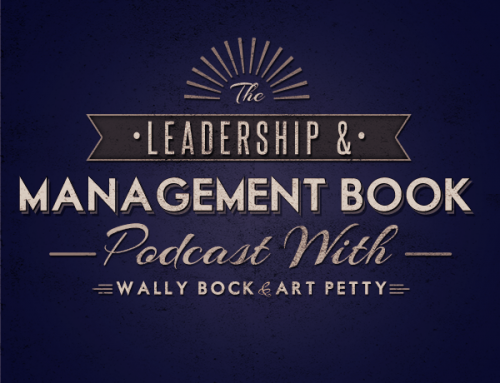 The medical community and drug companies have their ED malady and cure, but too many management and project teams suffer from their own form of ED…with two more D’s…EDDD… Effective Dialogue Deficit Disorder.
The medical community and drug companies have their ED malady and cure, but too many management and project teams suffer from their own form of ED…with two more D’s…EDDD… Effective Dialogue Deficit Disorder.
It’s not that people aren’t talking. There’s no deficit of hot air swirling around most meeting rooms. The issue is all about the quality of the dialogue.
Consider:
- All the firms who use last year’s operating plan and budgets as the basis for next year’s plan, without vetting and refreshing on what’s really happening in their markets and with their customers and within their own businesses. The future is difficult enough to predict in the best of circumstances. It’s laughably impossible to do it by focusing on the images in the rear-view mirror.
- Strategy meetings where the swirling discussions include opinions, facts, emotions, ideas and yes some political posturing, all without order, direction or purpose. Kudos for getting people together for the right reasons. Now, focus on managing the discussion flow to ensure purpose and progress.
- Performance evaluation processes that don’t connect to professional development steps. Your job is to connect evaluation to forward progress and development. You’re not a movie critic…you’re responsible for helping someone create the next scene in their own professional movie.
- Project Teams that develop detailed risk assessments at the onset of their initiatives, and fail to constantly refresh and update on the risk plan. The pesky thing about dealing with risk is that it is annoyingly unpredictable in many circumstances. Vigilance and review beats static advance planning here everyday.
- Ideation or brainstorming sessions that develop long lists of ideas that are forgotten as soon as the flipcharts come down. Ideas are truly horrible things to waste.
5 Ideas to Help Cure Effective Dialogue Deficit Disorder:
1. Don’t preoccupy on the past. Use past results to assess where YOU failed to anticipate and execute, and then focus on asking the hard questions about what’s changing with markets, customers and competitors. Build your plan around what you should be doing to succeed in the emerging world, not on what you did last year.
2. Change your discussion approach. Learn and apply the process of parallel thinking and discussion to eliminate the swirl and sort facts from emotions, opinions and ideas. De Bono’s Six Thinking Hats is a great place to start.
3. Learn to feedforward. Every opportunity to offer “feedback” on prior performance should be better viewed as an opportunity for what Marshall Goldsmith describes as “feedforward.” Again, cut out the rear-view mirror stuff and help people design their way forward.
4. If is was important enough to “assess” and develop a document, it’s very likely important enough to revisit and rethink. Don’t ask people and teams to just comply with a step or process (i.e. create a risk assessment). Instead, encourage frequent return trips to check assumptions and incorporate new learnings.
5. Never waste ideas! Don’t ask people to exercise their creative capabilities and then lose the precious output. Build an idea inventory and reference it frequently.
The Key Point:
Teach your teams to engage with purpose. Plan and manage your discussions to include reflection, assessment, direction and action. Every discussion is an opportunity to design something going forward. Throw in a consistent serving of accountability and you are on your way to building high performance into your working environment.
—
JUST RELEASED! Check Out Art’s New Book: Leadership Caffeine-Ideas to Energize Your Professional Development
Want More: Sign up for the new, Leadership Caffeine e-Newsletter. I’ll guard your e-mail address with ferocity, while sharing ideas to energize and inspire.
About Art Petty:
Art Petty is a Leadership & Career Coach and Strategy Consultant, helping motivated professionals of all levels achieve their potential. In addition to working with highly motivated professionals, Art frequently works with project teams in pursuit of high performance. Art’s second book (an edited, annotated collection of the most popular leadership essays), Leadership Caffeine-Ideas to Energize Your Professional Development, was released at the end of September in 2011.
Contact Art via e-mail to discuss a coaching, workshop or speaking engagement.






Thank you for a timely and concise article on creating quality dialogue.
Given the sheer velocity of today’s business environment, I appreciate the emphasis on taking frequent return trips to check assumptions.
In our work designing the future workplace, we find this to be critical element to ensure ongoing alignment with business strategy.
Thanks for a great post, Art!
Judy, thanks for reading and sharing! The return trip is too often skipped. Kudos to you and your colleagues for recognizing and practicing this as well! -Art
EDDD – Love it!
Effective dialogue is harder than it sounds for most people and is indeed a critical skill that leaders and contributors at all levels need to learn. Thanks for another pertinent article.
Thanks, Simon! My pleasure. FYI, I thought about calling it “Eddy” as well. : )
Art,
Ha! “EDDY” — love it! So true– there’s no dearth of discussion. I appreciate your focus on future-thinking. One question though– where does “learning from past efforts” come into play? It may be inferred in #1 above, but I’d like to hear more about how that fits into a future-focus approach.
Jennifer, thanks for reading and for offering your insightful question on “learning from past efforts.” While my focus in the post was specifically on improving dialogue effectiveness, a number of the points go to capturing and leveraging that institutional or team memory. You are right…this is important.
Instead of basing next year’s plan on last year’s plus, assess the results (essentially, assess your decisions/assumptions) and learn from them as you move forward. The notion to revisit the Risk Plan is one that directly supports learning based on prior views. The feeback/forward issue of course takes prior experiences and outcomes and strives to change behaviors in the future. And the “never waste ideas” perspective is literally about building some institutional or team memory as a result of brainstorming efforts. In my mind (an often cloudy and confusing place!), more effective dialogue processes leverage the past yet strive to break the back of doing things by organizational inertia alone.
Thanks again for asking. This will make a nice follow-on post! Best, -Art
[…] Petty presents Art’s Weekly Leadership Message: Step Up to Cure Effective Dialogue Deficit Disorder posted at Management […]